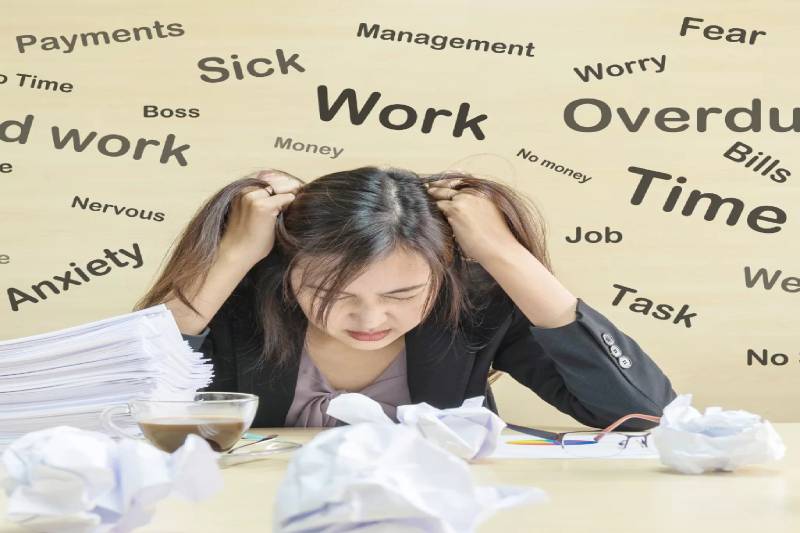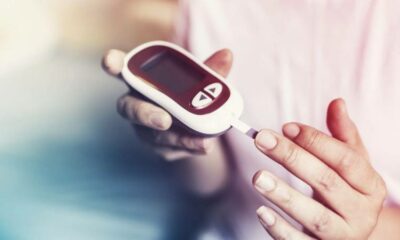Since stress is bad for health care workers’ mental and physical health, why isn’t management taking more steps to make the workplace less stressful? There is no denying that higher productivity may be achieved by a healthier workforce. Regrettably, a lot of medical professionals appear to place the blame for their stress on themselves, which is counterproductive to stress management.
Experts explain this in The Psychodynamics of Everyday Life and the Psychology of Individual and Social Transformation: “Even though workers may have higher rates of absenteeism and lower levels of productivity, it may still be more efficient for management to have workers feel bad about themselves…that worker may then feel powerless to change the stressful work conditions and powerless to change the way things are organized in the larger society—may actually be valuable resultant from the standpoint of management efficiency.”
Because feelings of helplessness at work keep us from becoming the kind of people we need to be, stress typically results from this place of powerlessness. It keeps us from reaching our full potential as people.
The idea of surplus powerlessness, which he defines as social, political, and economic structures designed to obstruct the realization of human potential. “Surplus powerlessness refers to the fact that human beings contribute to this powerlessness to the extent that their emotional, intellectual, and spiritual makeup holds them back from actualizing possibilities that do exist within the content of real powerlessness in ways that could potentially yield more possibilities for them to actualize their Human Essence,” the author explains.
Even being completely helpless might cause anguish. “…the fundamental experience of trauma is one of complete helplessness and loss of control.” A person who experiences a sense of helplessness grows up knowing something is wrong but is unable to identify the source of this insecurity, leading them to believe they are the issue. As a result, they fail to feel secure in their own skin.
The human brain is meant to survive, not to adapt to uncertainty. The brain regions responsible for controlling emotion and survival, the amygdala, also referred to as the body’s alarm system, take precedence over the neocortex, which is the area responsible for higher order thinking, during periods of severe discomfort and uncertainty. Humans become less cooperative, charitable, and empathic, and more self-centered. It’s a defensive tactic that might harm our relationships and our jobs.
The three things that humans perceive as being most important when our stress response is triggered by an external threat are our bodies (how can I take care of my body?), our surroundings (where can I go to feel safe? ), and time (how long will it take me to overcome this threat?).
Because humans are in survival mode when under stress, the three major factors mentioned above have a great deal of influence over us. Consequently, people begin to understand how to survive in the context of the danger that surrounds them. People no longer experience spirituality, consciousness, or environmental awareness. As humans get increasingly preoccupied with ideas of objects in the outside world, people become more materialistic. The things that possess, the people know, the places we have to go, and the challenges that face absorb people.
People lose sight of our true selves while people are in survival mode. Humans separate from the domain of actuality. The chemical surge and survival become our reality the more the stress hormone rush affects us. Unknowingly, people develop a dependence on the spike in stress hormones brought on by our job-related issues. We maintain these circumstances in our lives in order to support our compulsive belief that things are in danger. To put it plainly, cling tightly to our problems because they serve to affirm who we are. Whenever are in survival mode, people don’t pay any attention to the other members of the team or the surroundings.
This is crucial to comprehend since the ego takes precedence when workers are experiencing extreme stress at work.Workers are unable to think creatively or cooperatively. The brain’s survival center, the amygdala, simply takes over the creative and cognitive section of the brain, the neocortex.
Model of Demand and Control
The Demand/Control Model was introduced in 1970 . Its purpose was to evaluate the degree of psychological safety that workers needed to feel in order to express their concerns and the degree of autonomy and flexibility they might have in choosing their own job demands. In terms of workload and stress associated to work, this model rose to prominence. The approach considers two factors: the demand for jobs and the degree of control and authority granted to employees.
The employment demands, which can be either high or low, are displayed on the horizontal x-axis of the graphic that Karasek used to demonstrate his model. The job decision latitude, which can either be high or low, is displayed on the vertical y-axis. This Demand/Control Model then yields four possible situations
Low-strain occupations:
This situation combines employment with little demand and a large degree of employee control latitude. The most common jobs are in this area.
high-strain Jobs:
Jobs classified as high-strain include those that are extremely difficult, demanding, and/or have limited room for discretion. Employees must follow instructions and have no autonomy over their work. Deadlines can also contribute to a lack of decision-making flexibility, and employment involving stress are very likely to cause it.
Jobs that are passive:
These are straightforward positions with little to no room for discretion. This involves a great deal of production-based and repetitive work. These jobs carry the lowest risk of stress.
Active occupations:
These are really hard tasks where the worker has the flexibility to choose when to complete their work. Despite being extremely mentally demanding, the person does not view their job as difficult because of the high degree of choice freedom.
How the Demand/Control Model Is Used
The demand/control model concentrates on striking a balance between workers’ autonomy and their preferences. It suggests that people who experience high levels of work-related stress and little control are more likely to experience stress and worse health consequences.
The straightforward approach can be used to recognize and evaluate employees’ stress at work. It also provides a place to start for interventions. It would be prudent for the management to investigate the extent of the worker’s control latitude if the worker believes his task to be excessive. The job stress model indicates that an employee is in a stressful job but needs a more active job if he finds it difficult to have little or no influence over how his work is organized.
This paradigm has potential applications, especially given the flexibility of remote labor. According to this paradigm, it makes logical to provide team members greater autonomy when making decisions. For instance, it’s important to step aside after assigning job duties and responsibilities and let the team determine the best way to do the tasks. When given the freedom to choose their own work schedule and location, team members frequently feel more in control of their workload.

 Diabetology1 week ago
Diabetology1 week ago
 Diabetology5 days ago
Diabetology5 days ago
 Diabetology13 hours ago
Diabetology13 hours ago
 Diabetology14 hours ago
Diabetology14 hours ago













